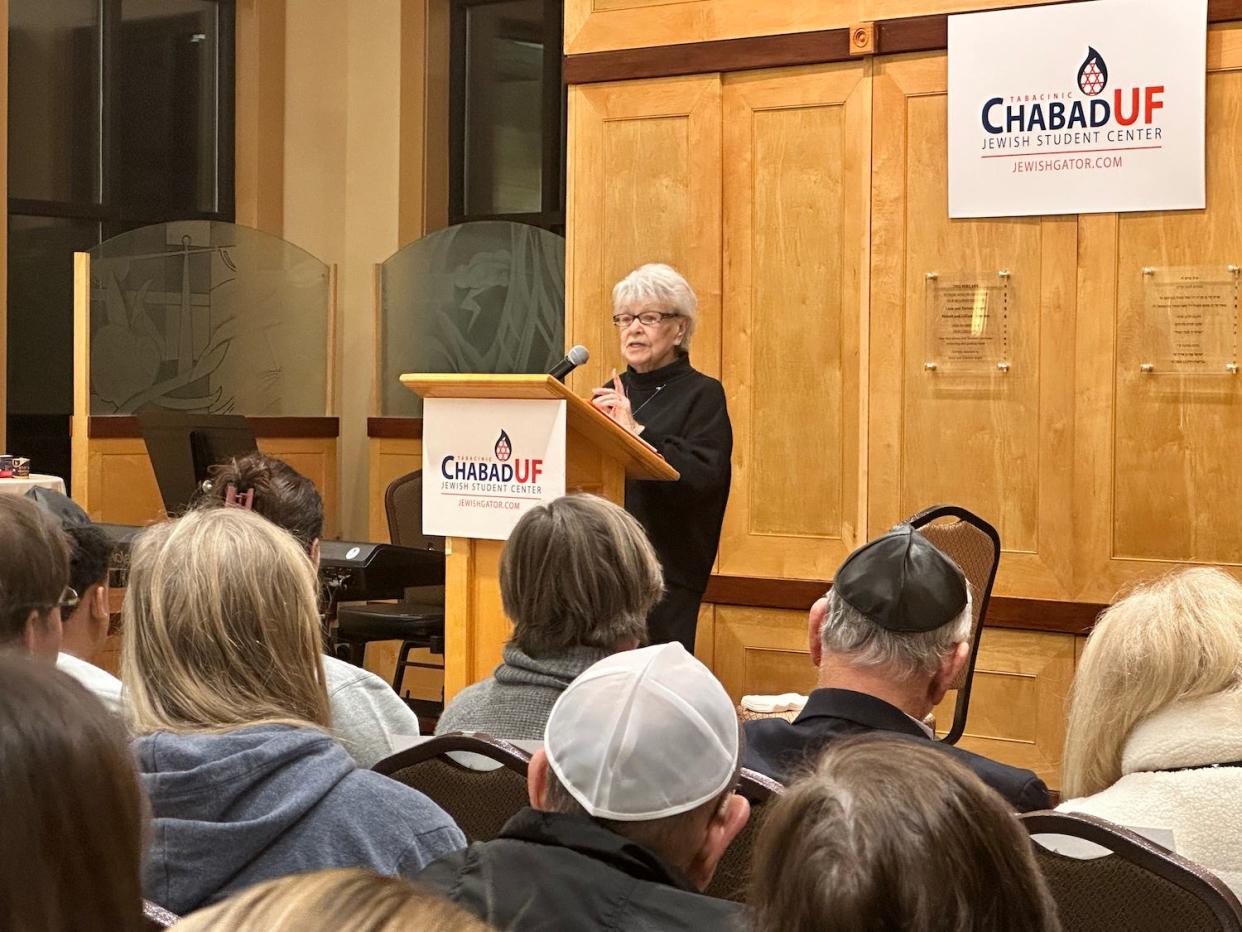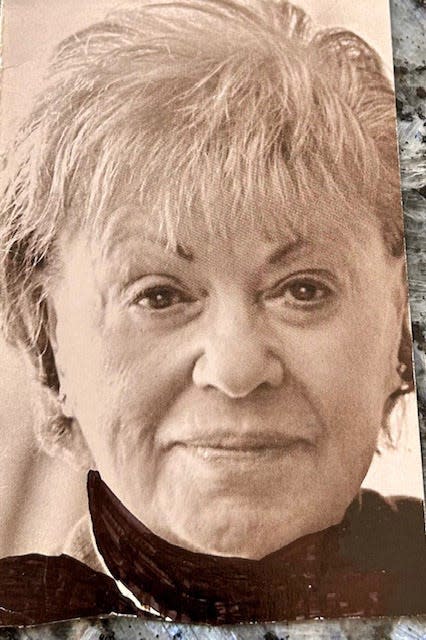'Never again': Holocaust survivor to share her story Feb. 15 in Venice

- Oops!Something went wrong.Please try again later.
VENICE – It took 50 years for Irene Zisblatt to start sharing the story of how she survived the Auschwitz-Birkenau concentration camp and the experiments of Dr. Joseph Mengele.
Now, the 94-year-old grandmother retells the story of her survival three or four times a week at schools, community centers and other neighborhood gatherings, to make sure an atrocity as vile as the Holocaust – the genocide of some 6 million Jews by Nazi Germany and its collaborators – never happens again.
“Look what’s going around the world, look what’s happening to our people in Israel,” Zisblatt told the Herald-Tribune in a phone interview. “We’ve been yelling for 80 years, ‘Never again, never again and never again!’ and ‘Never again' is now.”
Zisblatt will share her story in a special event at 10:30 a.m., Feb. 15, at the Venice Community Center, 3236 Nokomis Ave. S., in commemoration of International Holocaust Remembrance Day, which occurred Jan. 27.
The program is sponsored by the Chabad of Venice & North Port, the Jewish Federation of Sarasota-Manatee and Gulf Coast Community Foundation and includes world renowned violinist Vladimir Tsypin, who will play music from the movie “Schindler’s List,” on his 16th-century violin.
Tickets are available through the Chabad at https://www.chabadofvenice.com/tickets.
Fifty years of silence
Zisblatt started sharing her story in 1994, after the movie’s release.
Prior to Schindler’s List, Zisblatt said she did not think it was proper for her – especially when she was a young girl – to talk about the atrocities.

“I did not think that, for me, it was proper to share such an evil,” Zisblatt said. “Children should not know such an evil existed among men.”
After the movie, Zisblatt said, “I felt that this was my duty to share it.”
According to the New York-based Conference on Jewish Claims Against Germany, roughly 245,000 Jewish Holocaust survivors were still alive in 2023, with 49% living in Israel and 18% in North America, including 38,400 in the United States.
Zisblatt is the last of five Hungarian Holocaust survivors whose stories were featured in the 1998 documentary “The Last Days,” directed by James Moll and produced by Steven Spielberg.
In 2020, she released a memoir, “The Fifth Diamond: Story of a Holocaust Survivor.”
She acknowledged that the fact that she is among the dwindling number of survivors capable of sharing a first-hand story is another driving force.
“Sometimes I lose my voice, sometimes I don’t walk too fast,” Zisblatt said, “but I do it anyway.”
Zisblatt, born Dec. 28, 1929, lived in the Carpathian Mountains region of Hungary with her parents, four brothers and a sister.
After Germany invaded Poland in 1939, those who fled to Palestine attempted to tell others about atrocities they witnessed. Zisblatt’s father, like many others, chose to stay.
In April 1944, the family was sent to Munkacs, Hungary. With no housing available the family slept under tents made out of tablecloths.
“We were the last ones and they should have left us alone because the war was almost over but their hatred was so blind and they wanted to get every Jew they can,” Zisblatt said.
They boarded cattle cars on a train that the Germans claimed was headed to Tokaj, where they would work in the vineyards. Instead the train took them to Auschwitz.
Zisblatt swallowed four diamonds – that her mother had sewn into the lining of her dress – for safekeeping. After recovering them from her feces, she would repeat the process on several occasions in captivity, such as when Mengele used her for his deadly medical experiments.
Families were separated at Auschwitz – Zisblatt was the only one of her 45 family members who did not die in the gas chambers.
“They took everybody and for some reason they left me,” she said. “They selected me to work, not to the gas chamber.”
Zisblatt told a crowd at the Chabad UF Jewish Student Center in Gainesville last month that she had been scheduled for the gas chamber but she could not fit, so an SS soldier tossed her aside and shut the door.
Then 14, naked and with her head shaved, she ran up the ramp and hid. She was found by an 18-year old Sonderkommando – a prisoner forced to perform several duties, including removing dead bodies from the gas chambers – who gave her his jacket and put her on a train bound for a labor camp that was part of the Neuengamme concentration camp network in Germany.
She later worked in an ammunition factory alongside a girl she had met at Auschwitz. In January 1945, the prisoners were sent on death marches to avoid Allied troops.
The two girls escaped in the woods one night in April, and were found by American soldiers, asleep in an abandoned farm.
The soldiers took the two to a field hospital. While at the hospital Zisblatt was told that her friend, Sabka, died of typhus fever in her sleep.
Found by family from the United States
Zisblatt was moved to a holding camp in Austria where, one day, she received a letter from a man in the United States who shared the same last name.
It turned out that the man was her uncle, who had moved to America after World War I as a teenager.
The letter asked if Zisblatt wanted to come to America.
“I yelled so loud, they must have heard me all the way to New York,” Zisblatt said of her reaction.
She arrived in 1947 and discovered more relatives on her father's side in the U.S. – she had aunts, uncles, cousins.
Zisblatt, who lives in Broward County, went on to marry and have two sons and a daughter.
Related: Helga Melmed to share her story of surviving the Holocaust
In 1994, as she started sharing her story, Zisblatt returned to Auschwitz along with 5,000 students.
She made the four diamonds into a necklace that she still wears. It will become a family heirloom.
Information from the Gainesville Sun and WUFT was used in in this story.
This article originally appeared on Sarasota Herald-Tribune: Chabad to host Holocaust survivor for special program in Venice

